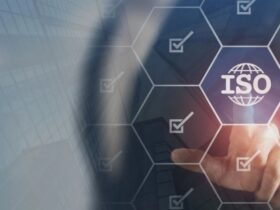Employee benefits have emerged as a strategic driver for organizations. As our workplace shifts due to changing demographics and advancing technology, the benefits administration landscape is changing rapidly. Employee Benefits Administration Services, as well as Benefits Administration Outsourcing Companies, are also changing because of innovation, increasing costs, and the desire to maintain personal relevance. Ultimately, the development of Benefits Administration Software will shape this evolution and offer smarter, more responsive solutions. In this article, we will discuss the current obstacles to, trends in, and audacious predictions of benefits administration for 2025 and beyond.
Current Challenges in Benefits Administration
- Increasing Cost and Regulatory Complexity: Across the globe, employers continue to experience dramatic rises in healthcare costs and increased scrutiny on compliance, which makes benefits management very expensive and dangerous. Regulatory frameworks require policies and procedures to be continuously updated, which can be a tough ask on internal resources.
- Low Employee Engagement: Employers lack comprehensive communication and the vast majority have a one-size fits all benefits package that adds to poor appreciation and usage of benefits. Only a small percentage of employers offer choice and flexibility, and predictably, most employers communicate only occasionally with their employees about benefits, further limiting engagement.
- System Fragmentation and Global Complexity: Managing benefits in multiple countries creates inconsistency and complications legally, culturally, and operationally. The more vendors and client portals they offer, the easier it is to create inefficiency for employees who want a single experience.
- Poor Data Integration: HR teams lack advanced analytics to help facilitate personalized benefits or to optimize their monetary investments.
Key Trends Shaping the Future of Benefits Administration
AI and Automation in Benefits Management
Artificial Intelligence (AI) technology, like chatbots and predictive algorithms for managing benefits, are making administrative duties and processes better so that benefits can be delivered. Automation helps cut down on mistakes, speed up claims processing, and give support in real time. This gives HR workers more time to think about strategy instead of paperwork.
The Rise of Personalized Benefits Packages
Employers want to move away from the traditional, generic benefits package. Today’s workforce wants bespoke benefits that address various life stages and needs, such as parental leave or student loan repayment assistance.
Financial Wellness Programs Integration
As the interference from financial strain organizations is increasing, businesses have been layering on budgeting tools, retirement advice and debt repayment campaigns into their core benefits suite. These solutions that combine financial well-being and health maximizes complete well-being and encourages sustainable health over time.
Increased Focus on Holistic Well-being
Mental health, once an add-on achieved by very few firms, now is the norm. Companies are growing counseling services, providing digital therapy, and wellness incentive programs and expanding service offerings for their employee assistance programs. Holistic programs can address not only the physical aspects of healing but also facets of emotional, social, and financial healing.
Predictions for 2025 and Beyond
Prediction 1: Hyper-Personalization Through Data Analytics
Anything your benefit department has house data on and knows how to program, will exist online as a hyper-personalized, tech-enabled option. Employers will have the use of technologies and engagement through data about lifestyle, experience and preferences to make recommendations. The incentivization of value behind every action with the personalized suggestive benefit equals higher engagement
Prediction 2: Blockchain for Secure and Transparent Benefits Management
Through the use of blockchain the employer will allow data collection to look at each defined change. The documented record will be immutable and tamper-proof, whether for claims made or evidence of eligibility. These technologies will protect personal information, help employers carry out their regulatory obligations and aid in the audit process, reduce opportunities for fraud and reduce compliance.
Prediction 3: Expansion of On-Demand and Flexible Benefits
With the rise of the gig economy and remote workforce employees increasingly expect flexibility and demand on-demand access to their benefits options. Employees will be allowed to self-select, on a dynamic basis their health, wellness and financial benefits through an online mobile experience or direct online portals, often by working with their benefits administration outsourcing company.
Prediction 4: Greater Use of Predictive Analytics for Cost Optimization
AI Predictive Analytics will highlight excessive trends, overindulgence, and inefficiencies in an organization’s benefits programs. It then allows the employer to make needed changes within their plans, negotiate their renewals, and offer preventative wellness programs to save in cost and remain supportive.
Prediction 5: Seamless Integration With HR Tech Ecosystems
Current opportunities for employers to integrate payroll, HRIS, and benefits technology requires an interoperable relationship, as never seen before by employers. The use of APIs and integrated platforms will require advanced Benefits Administration Software Development Visions to create real-time uses of data, beyond just improving the employee experience as a whole but also improve administrator visibility when benefits data is being used for employees.
The Role of Technology in the Future of Benefits Administration
AI-Driven Decision Support for Employees
AI-Powered Smart decision-support tools will enable employees to parse through and then select the most effective benefits package, providing an experiential change from overwhelming decisions to a guided journey.
Mobile-First and Self-Service Technology Access
As digital natives become the key ingredient of modern business, benefits portals and “self-service” platforms will change the expectations of access instantly through the internet vs in-person. Employees will be able to enroll in, change, select, or live portals through mobile devices to improve an employee’s experience via benefits provided by employers.
Wearables, IoT & Wellness Benefits
An abundance of wearables and IoT devices will enable real-time data around health maintenance, with real-time personalized incentives. Insights from this data will enable employers to encourage healthy populations; demonstrate program analytics; and share the potential savings in insurance premiums— all through a benefits platform with opportunities from top Benefits Administration Software companies.
Preparing for the Future: Steps for Employers
Adopting Agile Benefits Platforms
Agile, cloud-based benefits platforms have speedy product development capabilities and help employers adjust quickly to changing regulations and offerings, and a rapidly changing workforce. When you combine Employee Benefits Administration solutions with, you’ll find that it provides scalability, compliance and a steady stream of innovation.
Upskilling HR on New Skills
HR teams must operationalize AI, analytics and digital learning for employees. They require training on how to use technology and the type of training that gets them thinking about data-based decision making to optimize ROI of modern benefits platforms.
Compliance is Required
With laws is a constant state of change, whereas employers often operate across multiple jurisdictions, they must make compliance management a priority. Benefits Administration Outsourcing Companies provided the benefit of great legal teams, using the latest protocols and helping businesses reduce risk and potential liability.
Final Takeaway
Benefits administration is in the transformation business! The trajectory of benefits is the result of technology, personalization, and emerging knowledge of holistic well-being. Tomorrow’s benefits world will be more flexible, more secure and more dedicated to the employee than ever before! Organizations will need to adapt and embrace advanced Benefits Administration Software Development, employ flexible Employee Benefits Administration solutions and engage with an ethos of Benefits Administration Outsourcing Companies to build resilient and attractive workplaces while demonstrating a culture that supports the needs of diverse and digitally enabled workers. By committing to the preparations now, employers will open new exciting doors to a dynamic new reality of benefits redeemed consistently and decidedly for the employee, while still achieving business growth and performance.













